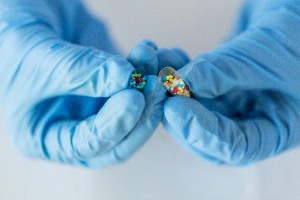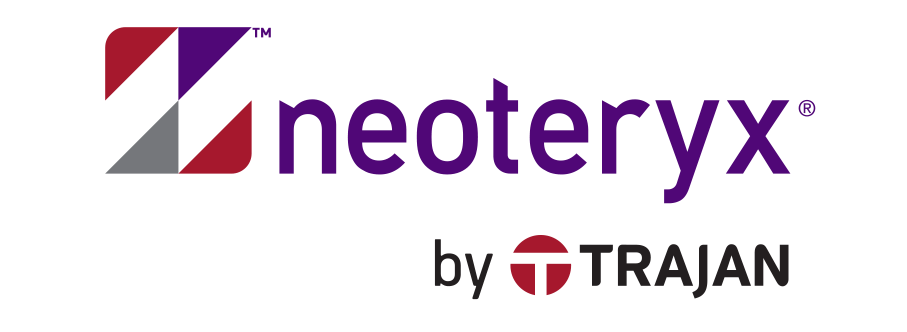Share this
microsampling in pharmaceutical drug discovery and development: the patient-centric approach
by Neoteryx Microsampling on Dec 9, 2019 4:46:00 AM
 Patient-centric healthcare has taken center-stage. With the increasing access to information, patients want to play a role in treatment methods and applications. Patient-centric sampling has an important part to play.
Patient-centric healthcare has taken center-stage. With the increasing access to information, patients want to play a role in treatment methods and applications. Patient-centric sampling has an important part to play.
Doctors still control treatment delivery. But patient-centric healthcare involves the administration of medication in ways meaningful and valuable to individual patients. Patients want more control over their treatment and to be active in monitoring chronic conditions.
Patient-centric approaches are not only applied in treatment delivery but also clinical trials and pharmaceutical drug discovery. Pharmaceutical companies continue to explore and implement ways to enhance the comfort of clinical trial participants to better and more quickly bring lifesaving drugs to market.
Significant improvement has been made, mainly in the area of remote blood sampling. Medical laboratories have conducted numerous trials to acquire and transport blood samples from remote locations.
One invention was dried blood spot (DBS) collection. It was an excellent alternative to venipuncture; it involved making a finger prick on a filter paper and allowing it to dry before transportation to the lab.
While it proved an effective remote blood sampling method for pharmacokinetic studies, dried blood sampling presented several challenges to researchers. The most notable was the lack of the right amount of hematocrit for clinical researchers and laboratories to make conclusive and accurate reports.
The main reasons DBS was slow to catch on in clinical trials include:
- Hematocrit effect
- Need for expensive automation equipment for card punching
- Probability of disruption to existing lab workflows
Why Microsampling is More Effective
Microsampling was invented as an alternative traditional to DBS because it delivered reliable blood samples for clinical trials. The technology enables researchers to collect blood samples from homebound patients, rural residents, and patients or physicians living in remote areas.
It also reduces the need to use satellite animals in animal studies to determine PK profiles. This is because the collection of comparable blood volumes at the same time from all animals helps achieve better comparison within groups. Additionally, researchers can collect more data from each animal. They can then evaluate more parameters from one animal. With a less invasive blood sampling technique, animals are less stressed.
It is this technology that spawned the development of a volumetric absorptive microsampling device. The device absorbs a fixed volume of blood, which is processed as a whole.
Additionally, blood samples collected using VAMS-driven devices remain stable for up to 30 days when stored at room temperature. The effect of hematocrit on the accuracy of the clinical trials was also reduced.
Share this
- Microsampling (206)
- Research, Remote Research (119)
- Venipuncture Alternative (105)
- Clinical Trials, Clinical Research (83)
- Mitra® Device (73)
- Therapeutic Drug Monitoring, TDM (51)
- Dried Blood Spot, DBS (39)
- Biomonitoring, Health, Wellness (30)
- Infectious Disease, Vaccines, COVID-19 (24)
- Blood Microsampling, Serology (23)
- Omics, Multi-Omics (21)
- Decentralized Clinical Trial (DCT) (20)
- Specimen Collection (18)
- Toxicology, Doping, Drug/Alcohol Monitoring, PEth (17)
- Skin Microsampling, Microbiopsy (14)
- hemaPEN® Device (13)
- Preclinical Research, Animal Studies (12)
- Pharmaceuticals, Drug Development (9)
- Harpera Device (7)
- Industry News, Microsampling News (5)
- Antibodies, MAbs (3)
- Company Press Release, Product Press Release (3)
- Environmental Toxins, Exposures (1)
- July 2025 (1)
- May 2025 (1)
- April 2025 (2)
- December 2024 (2)
- November 2024 (1)
- October 2024 (3)
- September 2024 (1)
- June 2024 (1)
- May 2024 (1)
- April 2024 (4)
- March 2024 (1)
- February 2024 (2)
- January 2024 (4)
- December 2023 (3)
- November 2023 (3)
- October 2023 (3)
- September 2023 (3)
- July 2023 (3)
- June 2023 (2)
- April 2023 (2)
- March 2023 (2)
- February 2023 (2)
- January 2023 (3)
- December 2022 (2)
- November 2022 (3)
- October 2022 (4)
- September 2022 (3)
- August 2022 (5)
- July 2022 (2)
- June 2022 (2)
- May 2022 (4)
- April 2022 (3)
- March 2022 (3)
- February 2022 (4)
- January 2022 (5)
- December 2021 (3)
- November 2021 (5)
- October 2021 (3)
- September 2021 (3)
- August 2021 (4)
- July 2021 (4)
- June 2021 (4)
- May 2021 (4)
- April 2021 (3)
- March 2021 (5)
- February 2021 (4)
- January 2021 (4)
- December 2020 (3)
- November 2020 (5)
- October 2020 (4)
- September 2020 (3)
- August 2020 (3)
- July 2020 (6)
- June 2020 (4)
- May 2020 (4)
- April 2020 (3)
- March 2020 (6)
- February 2020 (3)
- January 2020 (4)
- December 2019 (5)
- November 2019 (4)
- October 2019 (2)
- September 2019 (4)
- August 2019 (4)
- July 2019 (3)
- June 2019 (7)
- May 2019 (6)
- April 2019 (5)
- March 2019 (6)
- February 2019 (5)
- January 2019 (8)
- December 2018 (3)
- November 2018 (4)
- October 2018 (7)
- September 2018 (6)
- August 2018 (5)
- July 2018 (8)
- June 2018 (6)
- May 2018 (5)
- April 2018 (6)
- March 2018 (4)
- February 2018 (6)
- January 2018 (4)
- December 2017 (2)
- November 2017 (3)
- October 2017 (2)
- September 2017 (4)
- August 2017 (2)
- July 2017 (4)
- June 2017 (5)
- May 2017 (6)
- April 2017 (6)
- March 2017 (5)
- February 2017 (4)
- January 2017 (1)
- July 2016 (3)
- May 2016 (1)
- April 2016 (2)



No Comments Yet
Let us know what you think